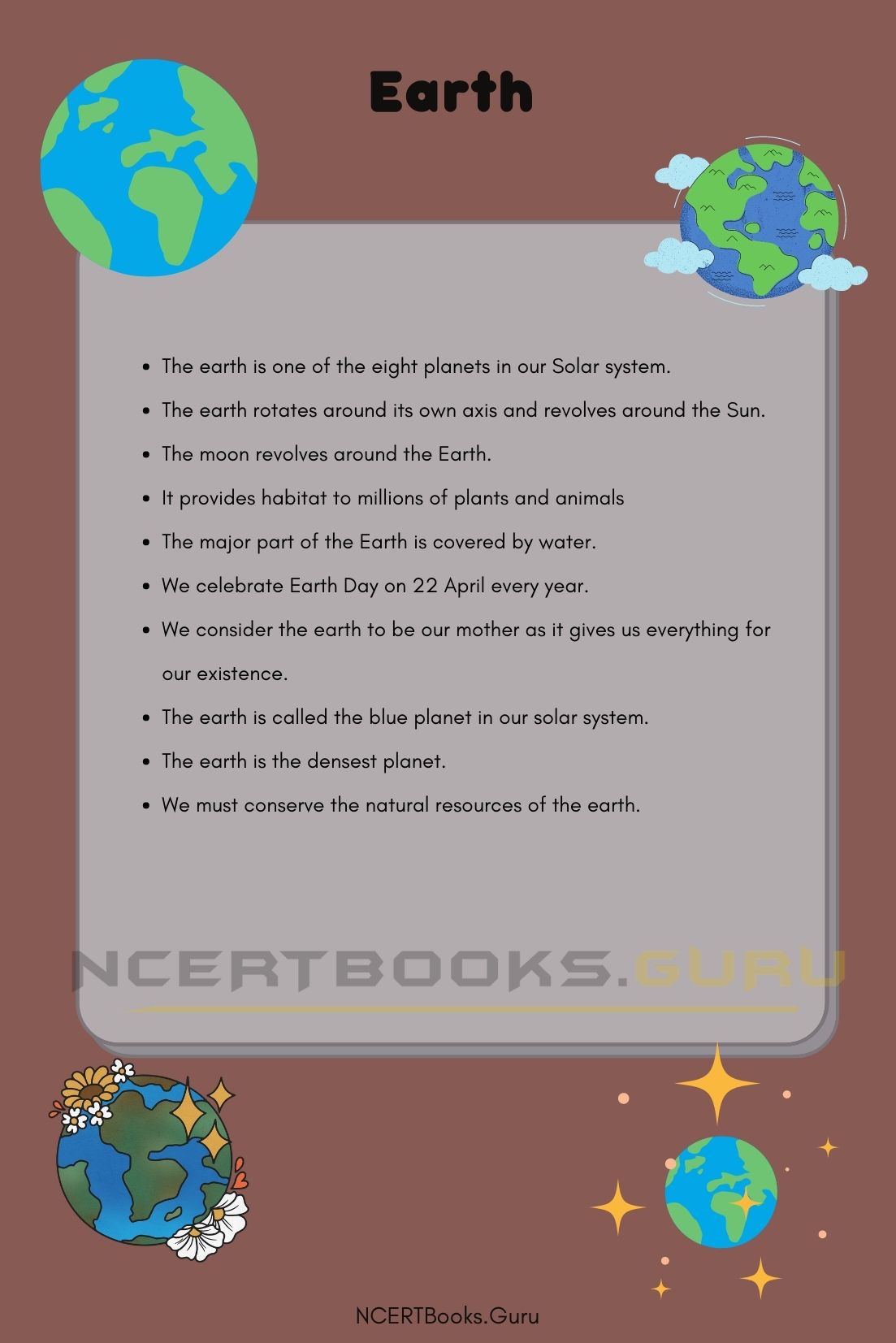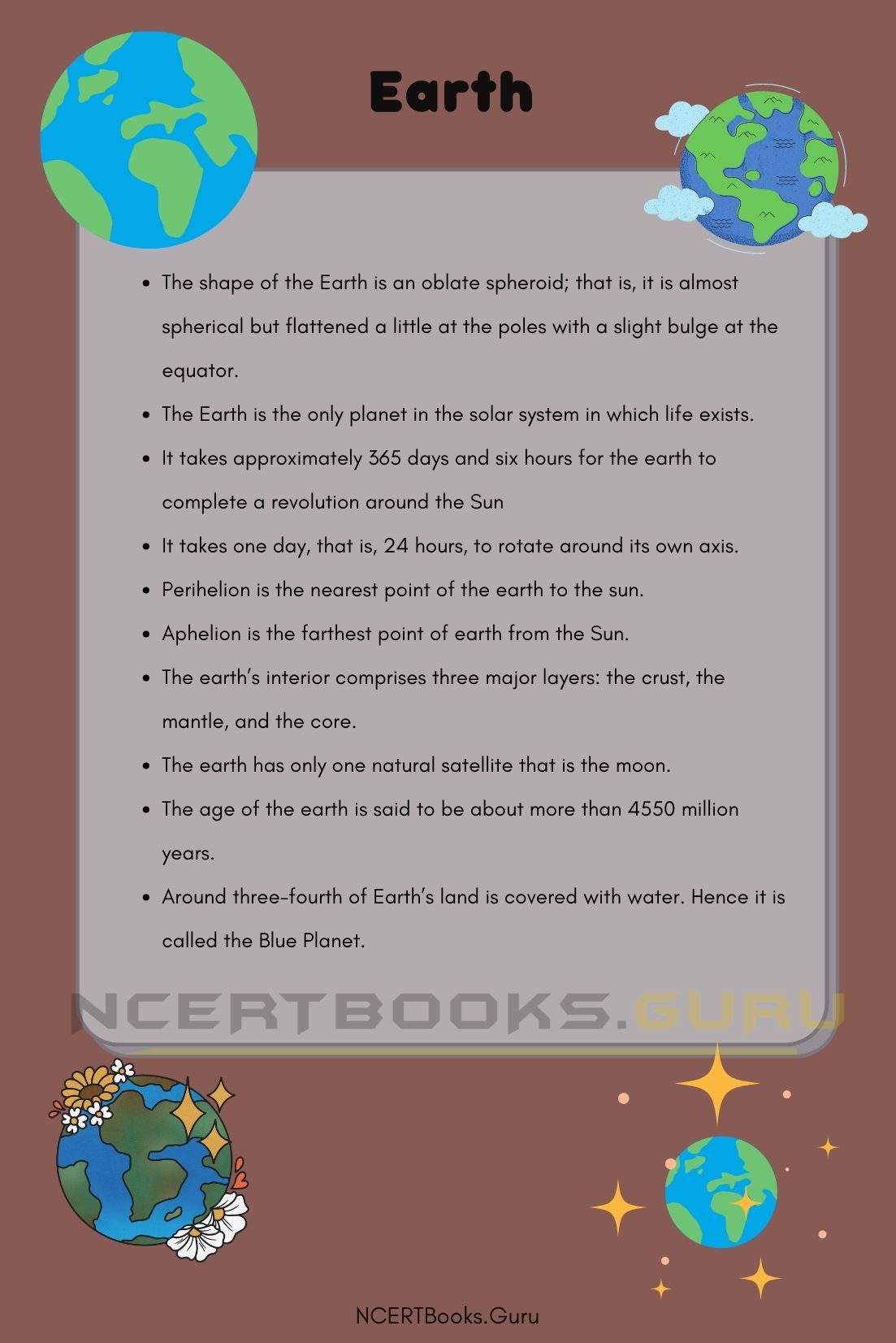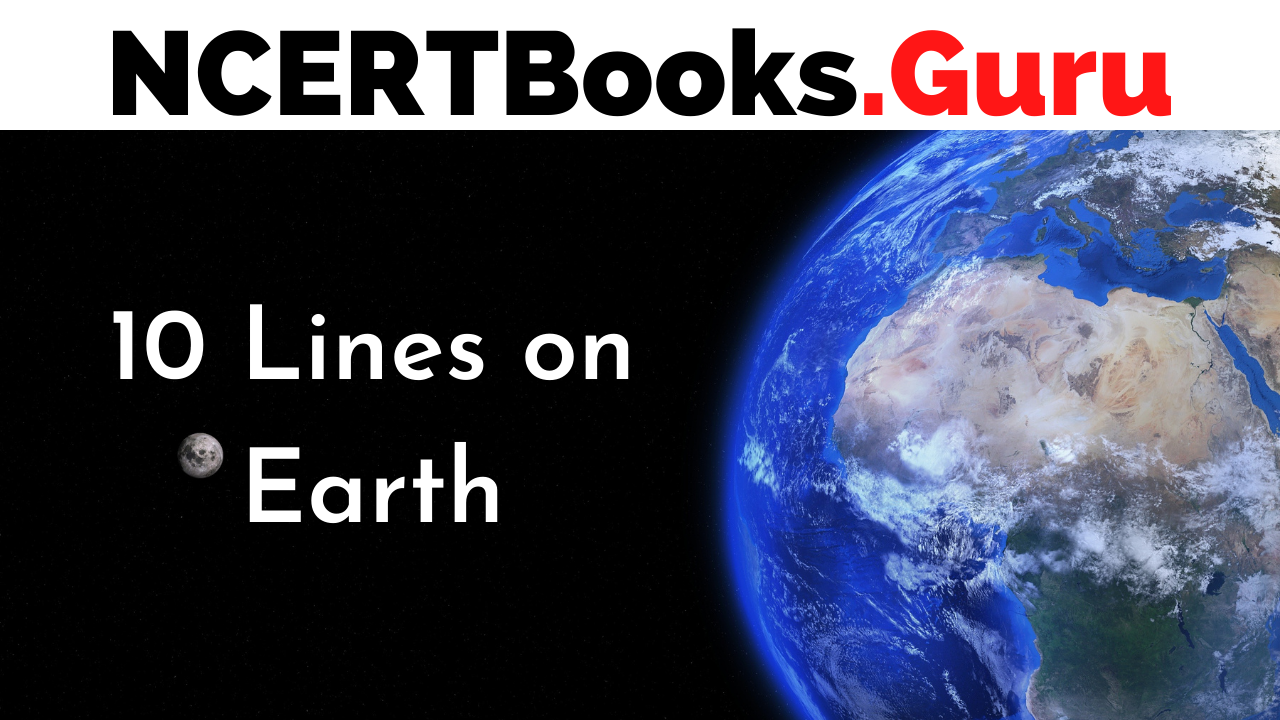10 Lines on Earth: In our solar system consisting of eight planets, the Earth is an inner planet or terrestrial planet, which is in a third near a position to the sun. It is a rocky planet with a dense atmosphere. It provides habitat and supports life—the rotation and revolution of the earth cause day and night and seasons changes, respectively. The shape of the earth is also a major factor in climatic conditions. It is called our mother planet.
Scientists believe that the earth is 5 billion years old. The earth has only one natural satellite, which is the moon. The moon revolves around the moon. When anything comes between the earth and the sun or between the earth and moon, an eclipse occurs. The movement of the tectonic plates of earth cause earthquake. A major part of the polar regions of the earth is covered by ice. The earth has a gravitational force, which pulls all the objects towards itself. The study of the earth and its rocks and its various forms is called Geology. Geography is, however, the study of earth, the relationship between people, planets; it also covers the study of the physical properties of earth and its position in the solar system.
Enhance your vocabulary and writing skills with 10 Lines Essays available. Spark up the creativity in you and access various Topics on 10 Lines all in one place.
Set 1 – 10 Lines on Earth for kids
Set 1 is helpful for students of Classes 1, 2, 3, 4 and 5.
- The earth is one of the eight planets in our Solar system.
- The earth rotates around its own axis and revolves around the Sun.
- The moon revolves around the Earth.
- It provides habitat to millions of plants and animals
- The major part of the Earth is covered by water.
- We celebrate Earth Day on 22 April every year.
- We consider the earth to be our mother as it gives us everything for our existence.
- The earth is called the blue planet in our solar system.
- The earth is the densest planet.
- We must conserve the natural resources of the earth.

Set 2 – 10 Lines on Earth for School Children
Set 2 is helpful for students of Classes 6, 7 and 8.
- The earth is the third nearest planet to the Sun in our solar system.
- The revolution of Earth around the Sun causes a change in seasons while the rotation around its own axis causes day and night.
- Mountains, Plateaus, and plains are the major landforms of the earth.
- The Earth is tilted at an angle of 23.50 on its own axis.
- There atmosphere around the Earth is very dense, comprising about 78.09% nitrogen, 20.91% oxygen, and 1% other gases.
- It takes about 8.3 minutes for sunlight to reach the Earth.
- The earth is the fifth largest planet in size.
- The coldest place on earth in Antarctica, and the hottest place in Libya.
- The atmosphere’s structure consists of the Troposphere, Stratosphere, Mesosphere, Ionosphere, and Exosphere.
- The movement of tectonic plates of the earth cause earthquakes.
Set 3 – 10 Lines on Earth for Higher Class Students
Set 3 is helpful for students of Classes 9, 10, 11, 12 and Competitive Exams.
- The shape of the Earth is an oblate spheroid; that is, it is almost spherical but flattened a little at the poles with a slight bulge at the equator.
- The Earth is the only planet in the solar system in which life exists.
- It takes approximately 365 days and six hours for the earth to complete a revolution around the Sun
- It takes one day, that is, 24 hours, to rotate around its own axis.
- Perihelion is the nearest point of the earth to the sun.
- Aphelion is the farthest point of earth from the Sun.
- The earth’s interior comprises three major layers: the crust, the mantle, and the core.
- The earth has only one natural satellite that is the moon.
- The age of the earth is said to be about more than 4550 million years.
- Around three-fourth of Earth’s land is covered with water. Hence it is called the Blue Planet.

Frequently Asked Questions on Earth
Question 1.
What is the difference between rotation and revolution of Earth?
Answer:
The spinning of Earth on an imaginary axis from West to East is known as Rotation, whereas Earth’s motion on an elliptical orbit around the Sun is known as revolution.
Question 2.
Is Earth an inner or outer planet?
Answer:
The Earth being situated near the Sun, it’s the third nearest planet to the Sun and is an inner planet.
